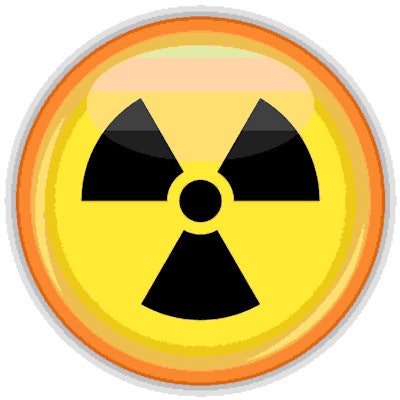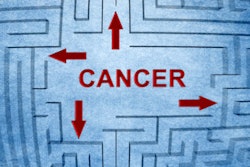
Special labeling and shipping precautions for radioactive sentinel lymph node (SLN) specimens may not be necessary in hospitals, according to a study published April 21 in the Journal of Medical Imaging and Radiation Science.
A team at Mount Sinai Hospital in Toronto, Canada, tested the radioactivity of SLN samples sent to their pathology department from patients who had undergone technetium-99m (Tc-99m) lymphoscintigraphies. They found the storage time needed for specimens to decay to twice the background radiation levels was far less than the 24-hour regulatory limit.
The finding could eliminate the need to store these samples for radioactive decay -- allowing for prompt handling and processing and thus increased workflow efficiency, wrote senior author Barry Ivo, the hospital's radiation safety nuclear medicine officer, and colleagues.
"The time to reach less than twice the background levels was significantly less than 24 hours, meaning that radioactive labels are not needed, and the 24-hour overnight specimen storage can be mitigated," the group wrote.
Lymphoscintigraphies are common nuclear medicine imaging procedures used to identify which lymph nodes are draining fluid from a patient's cancer, with uptake of Tc-99m radiotracer by the nodes used as a marker. Once identified, these nodes need to be biopsied to determine if the cancer has spread and thus are sent to pathology labs for testing. For safety, current best practice suggests that these SLNs need to be held for up to 24 hours to allow for radioactive decay prior to being handled.
But it remains unclear whether the entire 24-hour waiting period is absolutely necessary, the group noted. To explore the question, the team used a dose calibrator on SLN specimens from 30 breast cancer patients retrieved from the pathology department on the same day of biopsy. They measured the dose, specimen, and concurrent background radioactivity in megabecquerels (MBq).
According to the findings, the mean time for specimens to reach twice the background level of radioactivity was four hours, significantly less than current storage time of 24 hours (p < 0.001). In addition, the mean time point for the SLNs to reach 1/16th of the original activity was eight hours (p < 0.001). The average node activity was 0.14 MBq.
"The findings of this study indicated that the radiation levels present in the SLN at the time received by pathology are insignificant and very minimal," the researchers wrote.
The investigators noted that between 400 and 600 lymphoscintigraphy procedures are performed yearly at their hospital and that the findings may influence efforts to develop or update organizational policies and procedures.
"Awareness of radiation levels present in biological specimens derived from the lymphoscintigraphy procedure serves as an informative guide for the staff involved in managing such specimens," the group concluded.





















